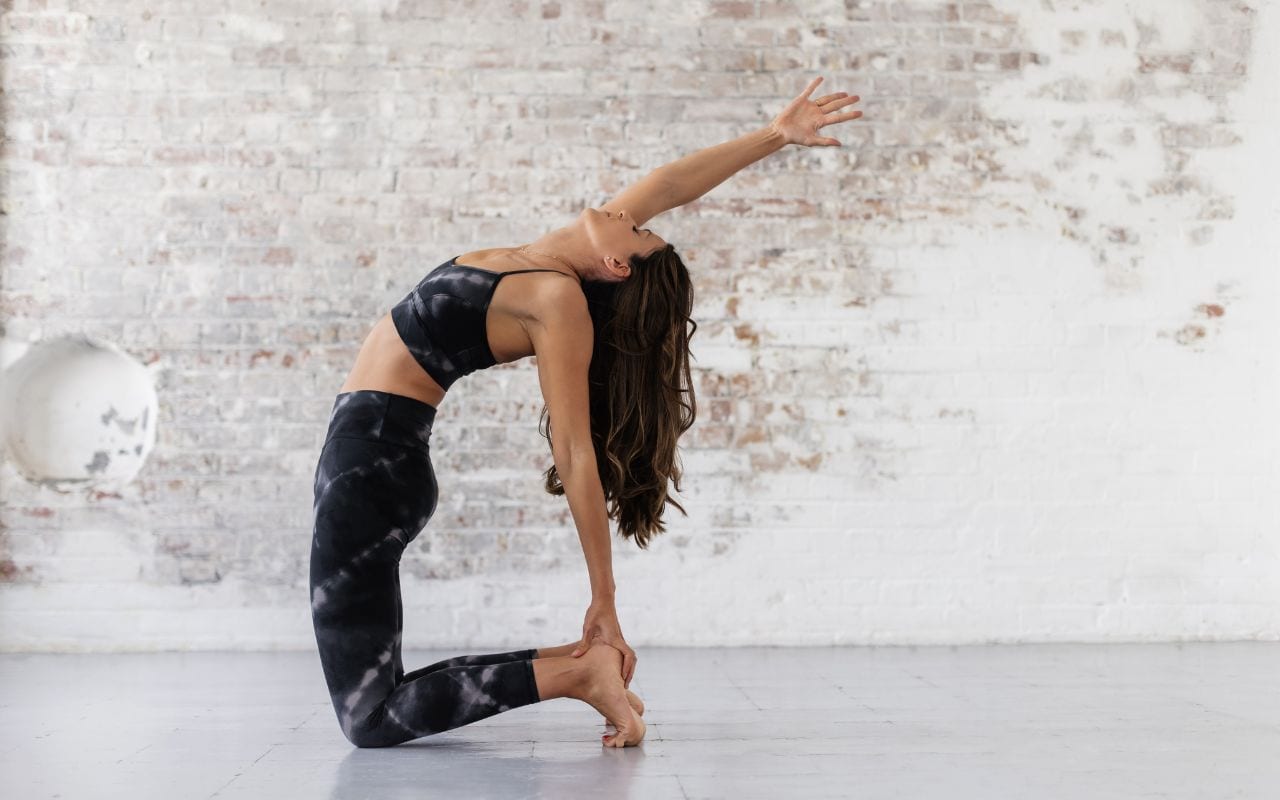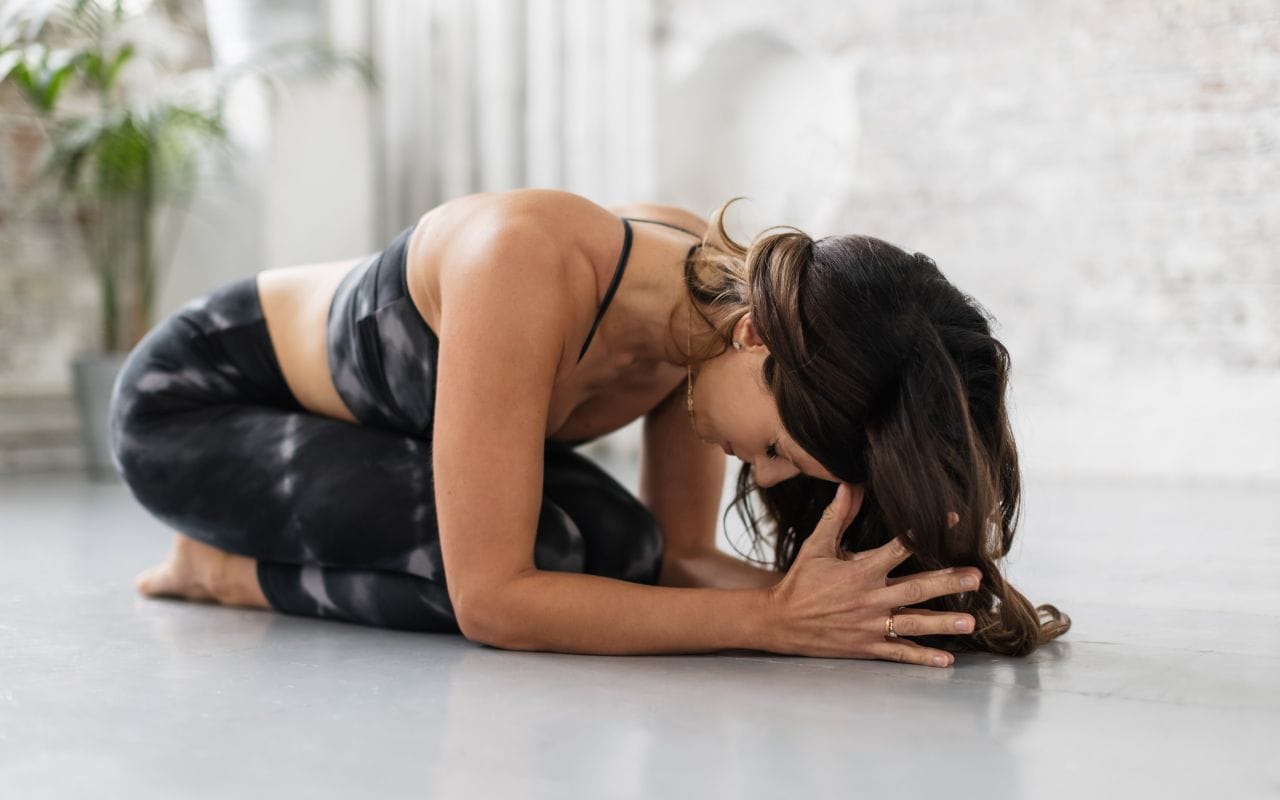
Yoga unpacked: Ahimsa – live with love
Ever been in a yoga class and not fully understood what the teacher is talking about? Bestselling author and creator of the top-rated Yoga Happy app, Hannah Barrett, is here to help. This month, she is unpacking the yogic concept of Ahimsa
Reading time: 5 minutes
What is ahimsa?
"I alone am responsible for my thoughts, words and actions."
At the heart of yoga is love. In The Yoga Sutras of Patanjali, the first of Patanjali's five yamas is ahimsa. The yamas can be thought of like our ethical backbone – ethical considerations on how to avoid harming ourselves or others.
The philosophy at first can feel overwhelming but it is the root of our whole yoga practice and once broken down you realise it can be applied to everything we do. We have the opportunity to practice the philosophy the yamas teach us through every interaction we have. And the more we practice them, the bigger ripple effect they will have. With them we are planting positive seeds of change for others to follow.
The first yama, ahimsa, translates to ‘non-violence’ or ‘absence of injury’ from Sanskrit; I like to think of it as a reminder of love. To act with love through our words, thoughts and actions. And not just towards others but to ourselves as well.
Ahimsa is arguably the most important of Patanjali’s ethical codes, and all of the rest of the yamas build off ahimsa. It allows us to live a more conscious, balanced and harmonious life.
We can also look at Ahimsa in three different parts:
Inwardly – thoughts and behaviours that have a detrimental effect on ourselves, for example, limiting beliefs holding us back from our full potential.
Towards humanity – thoughts, words and actions that have a detrimental effect on other humans, for example, gossip and forgetting the power our words have on others.
Towards our Earth – behaviours that cause detriment to the world that we live in. For example, disregard to our planet by littering or not considering how much and what we are consuming.
How can we apply it to life now?
We are the only one who is responsible for our own words, thoughts and actions and we can choose to demonstrate love and kindness in everything we do.
A few examples of how we can practice non-violence in our daily interactions:
Kindness towards others – can you refrain from gossip and strive for harmony instead? Can you truly listen and be present with others? Can you practice kind deeds, not for any reward? And can you practice forgiveness even though it can feel impossible?
Ahimsa on the road – I am sure there have been moments in your car or on your bicycle where you have felt extreme anger and resentment against another road user. Instead of retaliating or letting those negative thoughts pulsate endlessly through your head, can Ahimsa inspire you to take a breath? Can it inspire you to find that needed pause and reflect on that person who just cut you up – maybe they just found out their mother died or they are rushing their wife to hospital?
Mother Earth needs us to care – what can you do today to make a positive impact on the environment? It could be walking instead of driving, recycling, composting, supporting local firms, planting trees or being mindful of where or what you are buying is coming from. Small steps lead to bigger steps. Don’t think you don’t make a difference because you absolutely do.

How can we apply ahimsa onto the yoga mat?
Another key concept of yoga is self-study and uncovering our true identity and the layers that are born from our personal experiences, education, childhood, etc. One way of delving into self-study is through journalling and self-reflection.
Some journal prompts relating to Ahimsa to reflect on this month: How can I introduce more self-care into my daily rituals? How can I make sure I look after myself as well as others?
Think of the last time you thought negatively about someone else. What drove that negative judgement and what can you do in future when those thoughts arise?
Bring to mind someone that you don’t like. Notice the thoughts, feelings and emotions that appear. Can you try and think of this person instead with love, kindness and compassion for whatever they've been through that’s resulted in them being like they are?
Self-study and journalling
One of the main things I want to teach my students is the beauty of listening to our bodies and what is right for them at that moment in time (as we are constantly changing). The beauty in this listening means we can modify our practice to suit our needs and to avoid harm. Whether this is in the form of a prop or perhaps even finding child’s pose instead of chaturanga.
Pose for Ahimsa – Tadasana (mountain pose)
Stand at the top of your yoga mat with the feet together or hip distance apart. Feel the earth beneath you, spread and lift your toes and place them gently one by one on the ground. As you do, find a moment of gratitude for the earth beneath your feet. Press down firmly through the soles of the feet and imagine there’s a hand just above the crown of your head, grow into the imaginary hand and feel the body activate as you do so, the core and legs engage and spine growing long.
As you rotate the arms outwards slightly so the palms can face forward, can this posture be your reminder of love and connection to this beautiful world? Your reminder to think, speak and act with kindness towards yourself and others. Strive to incorporate this mindful philosophy in your everyday life and notice how things start to change, and how it has a huge impact on yours and others’ happiness and freedom.
If you want to understand more about Ahimsa, ccheck out Hannah Barrett’s book Yoga Happy and the Yamas and Niyamas series on her app also called Yoga Happy! Find out more at hannahbarrettyoga.com
Photos: Cecilia Cristolovean (yogaandphoto.com)





